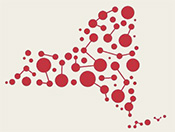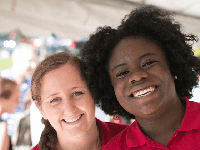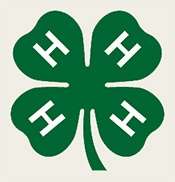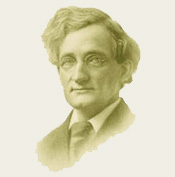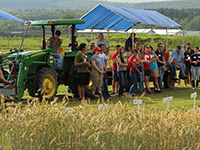The Three Sisters | A Legend | Diversity | How to Plant the Three Sisters | Activities | Information |  Evaluation
Evaluation
Exploring Corn
Through the activities in this section youth will:
• gather information for improved problem solving.
• use concrete thinking skills and enjoy discovery learning.
• learn to share use of a tool while working together.
• produce cornmeal and make measurements and observations about seeds and plant growth.
Shelling and Grinding Corn
If there were one activity to do with youth in the fall, related to the Three Sisters, this might be it! Young people enjoy grinding corn into cornmeal. For this activity, use corn that has completely dried down on the cob. You can use a sheller to remove the dry corn kernels from the cob or remove them by hand. Then, put the corn kernels in a grain mill and grind to the degree of fineness that you prefer, from a fine flour to coarse meal. Grinding with a mortar and pestle is effective but very time-consuming and can add interest to the activity.
Try to choose at least two different types of corn for comparison. For example, grind blue flint and yellow dent. How do the two compare in texture? In color and aroma? Another variation is to roast some of the kernels gently over low heat in an iron frying pan until they are golden. If you grind these roasted corn kernels into meal and then cook them with water (much as you would oatmeal or cream or wheat), you can make a good tasting corn cereal. Old shellers and grain mills can be purchased inexpensively at “junk” and antique shops. New ones are more expensive. Cooking supply stores sell grain mills, and some farm stores still carry corn shellers. See the resource section for a supply source.
Monocots and Dicots
Sprout some corn, bean, and squash seeds. How do they differ in appearance as they begin to swell and take up water? Grasses, including corn, are monocots, and beans and squash are dicots. Can you see the singe cotyledon (cot-ill-EEdun) of the corn seeds and the two cotyledons of each of the bean and squash seeds? These meaty plant parts provide nutrition to the young plant until it can make its own food. Examine the sprouts with a hand lens or magnifying glass. Can you see the tiny root hairs?
Observe Corn or Bean Seeds Absorb Water
Weigh two tablespoons of corn or bean seeds, then place them in a jar; cover the seeds with a measured amount of water and let them stand overnight. Drain the water and measure the amount left. How did the seeds change in size? In weight? How much water did they absorb?
Measure the Growth of Corn Plants
How does a corn plant grow, from the top or from the bottom? After corn plants are established, place marks with a permanent marker at the top, middle, and bottom of each plant. Measure the distances between the marks at weekly intervals: chart the results. Where does the greatest growth take place?

